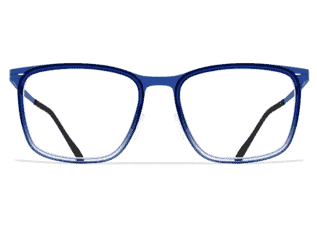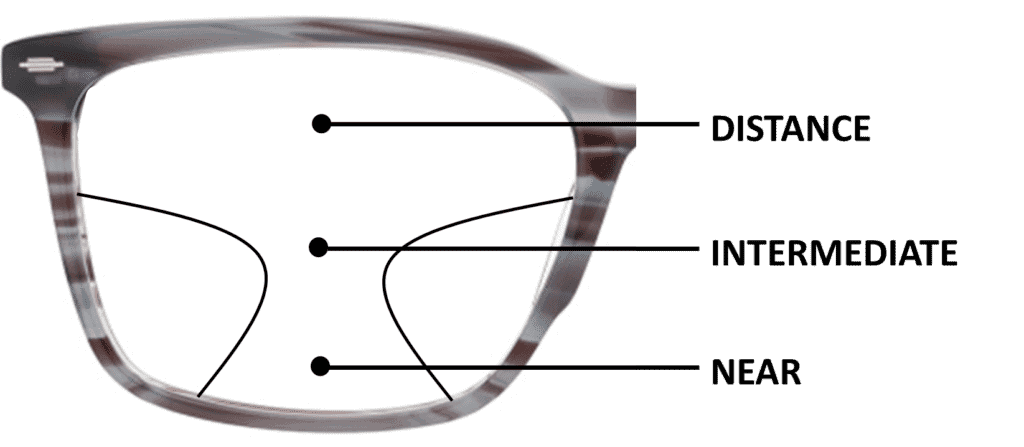
The Most Popular Lenses For Your Glasses
June 6, 2023

There are different types of lenses available to correct vision at varying distances. This is especially true for individuals over 45 years old because the eyes cannot focus up close as well as they once did. This blog will summarize the most popular lens designs that we recommend on a daily basis.
SINGLE VISION LENSES
Single vision lenses contain one prescription that fills the entirety of the lens. This is what most young people wear to see clearly at all distances, despite whether correcting nearsightedness, farsightedness, or astigmatism.
If still wanting to utilize single vision lenses once additional magnification is required at near, then the individual would need multiple pairs of glasses – one for distance and one for near. Over-the-counter (OTC) reading glasses are usually not the same as prescription reading glasses. OTC reading glasses have the same prescription in both eyes, and they do not contain any astigmatism correction. On the other hand, prescription reading glasses are more tailored, precise, and specific to the needs of each eye.
PROGRESSIVE LENSES

Once a reading prescription is necessary, it can be inconvenient carrying two pairs of glasses, one for distance and one for near. Progressive lenses are the ideal solution to this problem. All distances of vision are blended into one lens with an increase in magnification going down the lens. These lenses are sometime referred to as “no-line” bifocals. However, bifocals only contain two focal points of clarity, whereas progressives provide clear vision at all distances.
Another important point regarding progressive lenses is that not all progressives are created equally. There are distinct differences between a cheap, standard progressive compared to a quality, personalized lens design. Free form progressives are customized lenses that utilize position of wear measurements, so each lens is made to optimize vision based on how the lens sits in front of the eye. There is more information than just the glasses prescription that goes into the lens selection process.
COMPUTER LENSES
Computer (workspace) lenses are a type of progressive or lined bifocal that contain the computer prescription at the top of the lens with extra magnification on the bottom for near work. Since the pandemic, it is no surprise that this style of lens has become increasingly popular. There is no distance correction in these lenses, so it is still necessary to have another pair of glasses for non-computer activities.
These lenses provide a wider field of view for the computer, which also makes it easier to transition between multiple monitors. Many patients notice an improvement in eyestrain when wearing computer-specific glasses compared to a traditional progressive that includes the distance prescription.
LINED BIFOCALS
Lined bifocals are exactly as the name states; There is a visible line separating the distance and near prescriptions. While this option is not as popular anymore due to the advancements in progressive lenses, they are still an option for those who prefer or need it. The downfall with a standard lined bifocal is that there is no intermediate distance area for the computer. This means you have to suffer through the top distance portion or put your chin up to use the reading portion at the bottom, which could be too strong for the computer distance anyways. To fix this issue, an even fewer amount of people wear lined trifocals that contain a small ribbon of intermediate vision.
Stay tuned for a future blog regarding lens treatments, such as anti-reflective, Transitions, and blue light blocking technology!